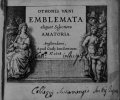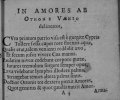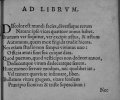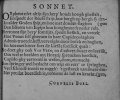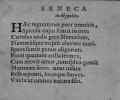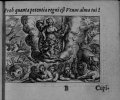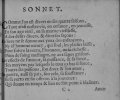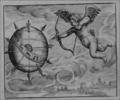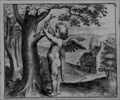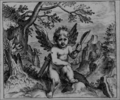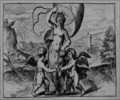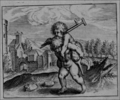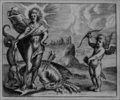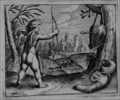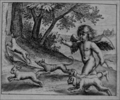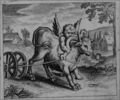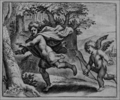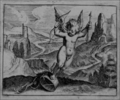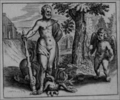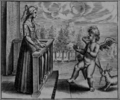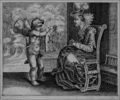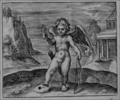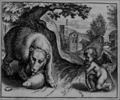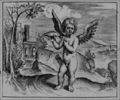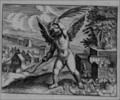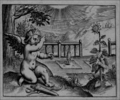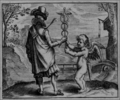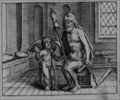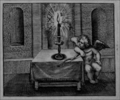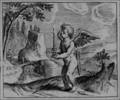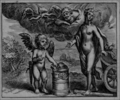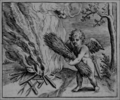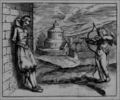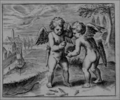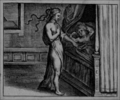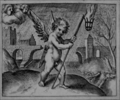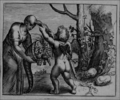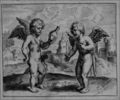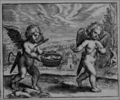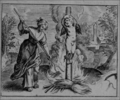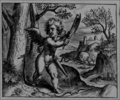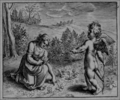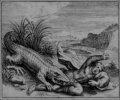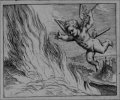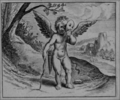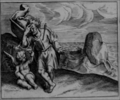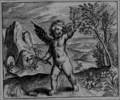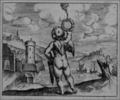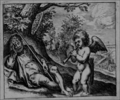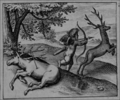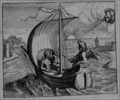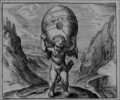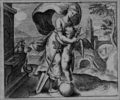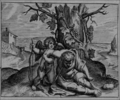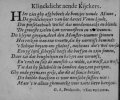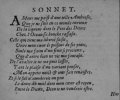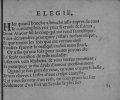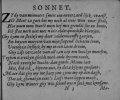Introduction
Introduction
General Introduction
This is our preliminary edition of Emblemata aliquot selectiora amatoria. We intend to add a full introduction to this edition. For now we have limited ourselves to the bare essentials.
Otto Vaenius
Otto Vaenius (or Otto van Veen) was trained as a painter and humanist.1 He was born in Leiden in 1556. In 1572, because of the political situation, he fled to the southern Netherlands with his family. In Liege he studied for a few years under Dominicus Lampsonius, and then left for a five-year stay in Italy. After his return to the southern Netherlands he stayed in Liege, Brussels and then settled in Antwerp. In all of these locations, Vaenius always tried to maintain favour with the Court. Until the return of his pupil Rubens from Italy, Vaenius was the leading painter in Antwerp. In his later years he turned to producing emblem books, notably Q. Horatii Flacci emblemata (1607), Amorum emblemata and Amoris divini emblemata. In 1612 he was appointed Master of the Archducal Mint. He moved to Brussels in 1615, where he died in 1629.
The Emblemata aliquot selectiora amatoria
About the Book
The Emblemata aliquot selectiora amatoria was first published in 1618, as a result of un ungoing competition by two Amsterdam publishers. In 1617 Crispijn vande Passe sr. published a book called Tronus cupidinis(see: [Titlepage]), a collection of emblems taken from Otto Vaenius's Amorum emblemata (see: [Titlepage]), Daniel Heinsius's Ambacht van Cupido (see: [Titlepage]) , Andrea Alciato's Emblematum liber and a Dutch poet up to this day only known by his initials 'P.T.L'. Vandepasse's initiative was followed by Willem Jansz. Blaeu (1608-1639), another publisher in Amsterdam. He took the 52 emblems forming the Tronus cupidinis, and separated them to publish them as two seperate titles, the first one being Emblemata aliquot selectiora amatoria, containing nothing but emblems by Vaenius (a selection from his Amorum emblemata), and the second one being Thronus cupidinis (see: [Titlepage]) containing some emblems by 'P.T.L' as well as emblems and other poems by famous Dutch poets such as Vondel, Bredero and Roemer Visscher.
The engravings for Emblemata aliquot selectiora amatoria were drawn up by Crispijn vande Passe jr. and Michel le Blon: the same engravers who made the picturae of Heinsius's Ambacht van Cupido (see: [Titlepage]) in the 1616-edition.
The selection made in the Emblemata aliquot selectiora amatoria (only 70 of the original 124 emblems were selected for this anthology) led to a collection that hardly differs in order from the Amorum emblemata of 1608. Only the emblems Conservat cuncta Cupido [2], Atlante major [67] and Et cum fortuna státque caditque fides [68] in the Emblemata aliquot selectiora amatoria ware taken from a not corresponding position in the Amorum emblemata (namely emblem 18, and 19 and 79). In the case of the emblems 67 and 68, more emphasis is laid on the role of Fortuna at the end of the selection. Whereas Vaenius in 1608 ends with two emblems on death, the 1618-anthology has two emblems on fortune to accompany the two emblems on death. Also, there are a number of picturae in which the clothing of the figures differs in 1618 (see emblem Quid sentiam ostendere malim quam loqui [18], Amor facit esse disertum [26] and Celerem habet ingressum Amor, regressum tardum [47]): they seem to be dressed according to the (Dutch?) style and fashion of these days, while in 1608 they were dressed in a more classical manner. Almost all picturae are mirrored in the 1618-edition, with the exception of the picturae of the emblems Inconcussa fide [19], Facit occasio furem [28], Vulnus alit venis, & cæco carpitur igne [31], Flammescit uterque [38], Sine fomite frustra [45] and Celerem habet ingressum Amor, regressum tardum [47].
The concept of Blaeu's Thronus cupidinis turned to be more succesful than the re-editing of Vaenius's Amorum emblemata. The Thronus cupidinis was reprinted several time, while Emblemata aliquot selectiora amatoria was published only once.
Editorial Procedures
Copy Used for This Edition
In making this edition of Emblemata aliquot selectiora amatoria we have used the copy of the 1618-edition conserved in the Library of the Amsterdam University, shelf number OK 78-193.
Transcription
We have transcribed the full text from the Amsterdam copy and encoded this text using TEI mark-up, to allow for flexibility in presentation and non-destructive editorial enhancement of the text. The full Project Guidelines for transcription, editorial intervention and indexing of the text are available elsewhere on this site.
Literature
The full Emblem Project Utrecht bibliography may be accessed using the menu option at the left side of this (or any) window. A selection of literature relevant to Emblemata aliquot selectiora amatoria follows here.
![[H O M E : Emblem Project Utrecht]](/static/images/rd-small.gif)
